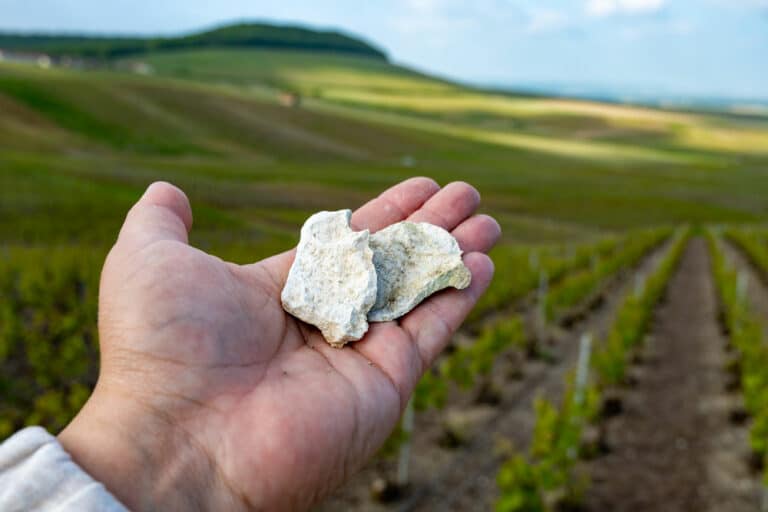
The crayères are an integral part of Champagne’s heritage. These impressive underground chalk cellars, dug several centuries ago, are today considered architectural and oenological treasures. Their role in the production...
Lire la suiteChampagne is a symbol of celebration, refinement, and craftsmanship. Behind each sparkling flute lies a complex and meticulous process, upheld by traditional houses. Among them is the Delaunois-Chanez estate, located in Rilly-la-Montagne. Let’s explore together the key steps in the creation of champagne and what makes this wine unique.
The first step in the creation of champagne is the harvest, which usually takes place in September. The grapes are handpicked to preserve their integrity. In Rilly-la-Montagne, the vineyards benefit from an exceptional terroir, where the climate and chalky soil give the grapes unique qualities.
After the harvest, the grapes are quickly transported to the press. The pressing must be gentle to extract a clear and pure juice, without bitterness. Modern presses ensure optimal extraction while respecting traditional craftsmanship.
The must (grape juice) is then fermented in stainless steel tanks or oak barrels. This first fermentation transforms the sugar into alcohol and produces the base wine. Here, special attention is paid to temperature and yeasts, ensuring a high-quality base wine.
Blending is where the magic happens. Wines from different plots and vintages are mixed to create a balanced and harmonious product. The art of blending, inherited from a rich winemaking tradition, allows for the production of champagnes with a unique character.
The secondary fermentation, or “prise de mousse,” takes place in the bottle. A mixture of sugar and yeast is added to the wine, and the bottles are then stored horizontally in the cellars for this fermentation, which creates the fine bubbles characteristic of champagne.
After several months or even years of aging on the lees, the bottles undergo riddling, a technique used to move the sediment towards the neck of the bottle. This process, often done by hand, ensures impeccable care and precision. Next comes disgorgement, where the sediment is expelled, and the bottle is topped off with a dosage liqueur that determines the type of champagne (brut, sec, demi-sec).
Before being sold, the champagne rests in the cellar for a few more months to allow the aromas to develop. Each bottle is carefully labeled and packaged, ready to be enjoyed by connoisseurs around the world.
The making of champagne is truly an art that combines tradition and innovation. Every step, from the vineyard to the bottle, is carried out with precision to ensure the quality and excellence of the final product. The result is a complex and elegant sparkling wine, a symbol of celebration and sophistication across the world.
The crayères are an integral part of Champagne’s heritage. These impressive underground chalk cellars, dug several centuries ago, are today considered architectural and oenological treasures. Their role in the production...
Lire la suiteThe 2025 Harvest in Champagne: A Promising Vintage for Champagne Delaunois Chanez
Every autumn, Champagne beats to the rhythm of one of the most important moments of the year: the grape harvest. This crucial stage marks the culmination of a year’s work...
Lire la suiteHow to Store Champagne? A Complete Guide to Preserving Your Bottles
Champagne is a wine of elegance, celebration, and refinement. But to preserve its aromatic richness, fine bubbles, and authenticity, it’s essential to store it properly. Whether you’re planning to drink...
Lire la suiteIn oenology, the terms ‘cru’, ‘grand cru’ and ‘premier cru’ are used to describe the quality and classification of wines, mainly in France. These terms are deeply rooted in winemaking...
Lire la suiteEnjoying a fine Champagne, such as those offered by Champagne Delaunois Chanez, is an art that goes beyond the quality of the wine itself. The choice of glass plays a...
Lire la suiteThe Champagne region is world-renowned for its exceptional sparkling wines. One of the secrets of this renown lies in the diversity of grape varieties permitted in the Champagne appellation. These...
Lire la suiteChampagne is a symbol of celebration, refinement, and craftsmanship. Behind each sparkling flute lies a complex and meticulous process, upheld by traditional houses. Among them is the Delaunois-Chanez estate, located...
Lire la suite